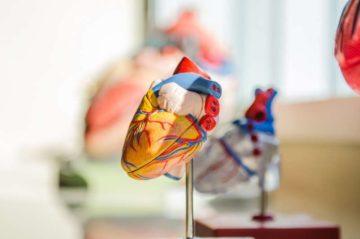From Phys.Org:
 Efforts to understand cardiac disease progression and develop therapeutic tissues that can repair the human heart are just a few areas of focus for the Feinberg research group at Carnegie Mellon University. The group’s latest dynamic model, created in partnership with collaborators in the Netherlands, mimics physiologic loads on engineering heart muscle tissues, yielding an unprecedented view of how genetics and mechanical forces contribute to heart muscle function.
Efforts to understand cardiac disease progression and develop therapeutic tissues that can repair the human heart are just a few areas of focus for the Feinberg research group at Carnegie Mellon University. The group’s latest dynamic model, created in partnership with collaborators in the Netherlands, mimics physiologic loads on engineering heart muscle tissues, yielding an unprecedented view of how genetics and mechanical forces contribute to heart muscle function.
“Our lab has been working for a long time on engineering and building human heart muscle tissue, so we can better track how disease manifests and also, create therapeutic tissues to one day repair and replace heart damage,” explains Adam Feinberg, a professor of biomedical engineering and materials science and engineering. “One of the challenges is that we have to build these small pieces of heart muscle in a petri dish, and we’ve been doing that for many years. What we’ve realized is that these in-vitro systems do not accurately recreate the mechanical loading we see in the real heart due to blood pressure.”
Hemodynamic loads, or the preload (stretch on heart muscle during chamber filling) and afterload (when the heart muscle contracts), are important not only for healthy heart muscle function, but can also contribute to cardiac disease progression. Preload and afterload can lead to maladaptive changes in heart muscle, as is the case of hypertension, myocardial infarction, and cardiomyopathies.
In new research published in Science Translational Medicine, the group introduces a system comprised of engineered heart muscle tissue (EHT) that is attached to an elastic strip designed to mimic physiologic preloads and afterloads. This first-of-its-kind model shows that recreating exercise-like loading drives formation of more functional heart muscle that is better organized and generates more force each time it contracts. However, using cells from patients with certain types of heart disease, these same exercise-like loads can result in heart muscle dysfunction.
More here.
